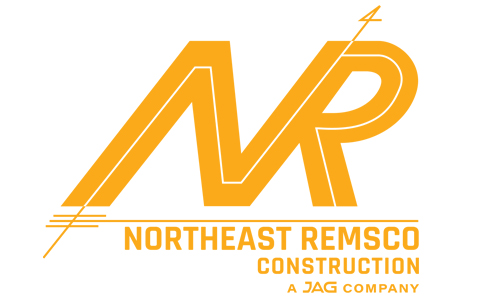
How To Successfully Navigate Complex Ground Conditions with Horizontal Hammer-Boring
Northeast Remsco Construction was subcontracted to construct eight parallel microtunnels beneath the NJ Transit light rails in Jersey City as part of Contract PAT -024.092 PATH Replacement of Substation No.2 with the Port Authority of New York and New Jersey. Each crossing consisted of approximately 80 ft of 36-in. steel casing under the light rail tracks to house the conduits required for the electrical upgrade work.
The original contract required ground improvement for stabilization beneath the railroad tracks prior to installing the casings because the borings indicated the ground was expected to consist of loose/wet fill. However, during the installation of secant piles and excavation of the pits, boulders were discovered, causing concern regarding the effectiveness of small diameter microtunneling should boulders be encountered during tunneling.
Horizontal pilot bores were installed to probe along the microtunnel path and confirm the way was clear of debris and boulders. Ultimately, a variety of obstructions were found, including an abandoned concrete duct bank and an abandoned cast iron water main, creating additional risk and concern regarding the probability of a successful microtunnel.
How to Overcome the Problem?
Two alternatives were explored to potentially mitigate the risk associated with the obstructions. The first option was to move the conduits overhead across the railroad tracks. While this option was certainly constructable, it would require redesigning and new permits. This would be time-consuming and expensive. The second option was for Northeast Remsco to explore alternatives to microtunneling that are more suitable for the ground conditions and potential obstructions encountered.
The other more traditional trenchless methods considered were auger boring, HDD, open face tunneling, and pipe ramming. Only the open face tunneling was deemed a realistic choice, but it would require redesigning the crossings to fewer/larger tunnels to accommodate manned entry. This would also require the acquisition of new permits.
As the search broadened for new casing installation methods, it became clear that one option – Geonex DTH Horizontal Hammer-Boring – provided the greatest chance of success given the ground conditions and other contract restraints. Like vertical down the hole (DTH) hammers that have been used for decades, the horizontal DTH hammer can progress through geology that would otherwise be impenetrable. This technology does have its limitations though, the most significant of which is that it is not steerable. This limits the length of the crossings. Shorter crossings and crossings that are not dependent on precision grade control are preferable. Our crossings were only 80 ft long and were for electrical upgrades, so they were ideal for the Geonex technology.
Northeast Remsco requested a meeting to introduce this technology to the project stakeholders. We discussed how the Geonex hammer works. It is pneumatic and requires three to four 1,250 CFM air compressors to operate. It pulls the casing into the bored hole, so there is no need for a backstop in the jacking pit. But the most important feature for us was that the combination of augering and hammering with the carbide button bits on the head pulverized the rock while the air blows the cuttings to the rear where the augers convey the spoils to the jacking pit. Ultimately, the Client directed us to proceed with the Geonex DTH Horizontal hammer in lieu of the microtunneling.
Because the Geonex process pulls the casing into the hole following the DTH horizontal hammer, the casing pipe joints were in tension rather than compression as in typical auger-bore work. This required thicker wall steel casing with fully welded joints.
The first crossing was performed during a weekend with track outages to demonstrate the equipment capability in the most controlled manner possible. This occurred in June 2024 and was successful, so we were permitted to proceed with the balance of the crossings. All eight crossings were completed in August 2024 thanks to the Geonex DTH technology.




